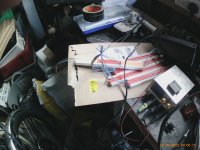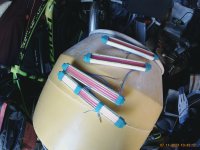I have a couple of 36v hailong batteries for my ebike, One of which is fitted with its own isolation switch while the other has not got this feature, I am planning on adding a dc/dc converter for additional lighting to help illuminate the bike making it more visible as the nights close in.
Ideally i would like to add a simple isolation switch to the battery without one as this would give me the simple cut off to stop the dc/dc converter draining power when not required. Without having to remove the battery whenever the bike is unused or adding the further complexity of an isolation switch or circuit elsewhere on the bike.
will such a mod require a new bms? since the switches used are nothing special or dont look it anyway? im asuming that they are indirect and switch a logic level state on the bms rather than break the battery power circuit directly? if so or is this probably an unused bms feature in my lacking battery or is my bms likely to be a cheapest feature poor option requiring an upgrade??
Rather than just hack open both batteries for a look see and bms pcb inspection for unused switch connections, i thought it better to ask first as if its going to require a replacement/upgraded bms pcb its probably not worthwhile.
Ideally i would like to add a simple isolation switch to the battery without one as this would give me the simple cut off to stop the dc/dc converter draining power when not required. Without having to remove the battery whenever the bike is unused or adding the further complexity of an isolation switch or circuit elsewhere on the bike.
will such a mod require a new bms? since the switches used are nothing special or dont look it anyway? im asuming that they are indirect and switch a logic level state on the bms rather than break the battery power circuit directly? if so or is this probably an unused bms feature in my lacking battery or is my bms likely to be a cheapest feature poor option requiring an upgrade??
Rather than just hack open both batteries for a look see and bms pcb inspection for unused switch connections, i thought it better to ask first as if its going to require a replacement/upgraded bms pcb its probably not worthwhile.





